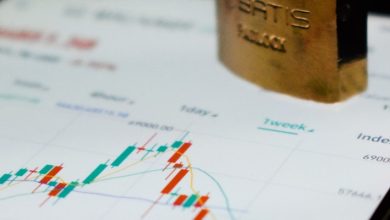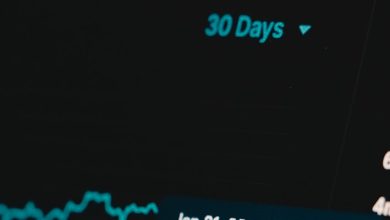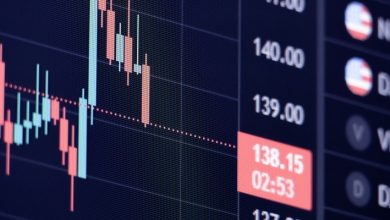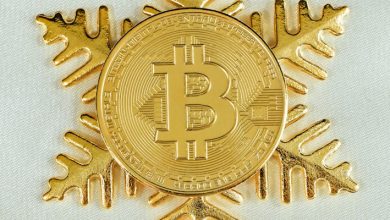NFTs and Digital Art: The New Frontier in Crypto

- Understanding NFTs: A Beginner’s Guide to Non-Fungible Tokens
- Exploring the Intersection of Digital Art and Blockchain Technology
- The Rise of NFTs: How Artists are Embracing the Crypto Revolution
- Demystifying the World of NFTs: What You Need to Know About Digital Collectibles
- Investing in NFTs: The Future of Art Ownership in the Digital Age
- Challenges and Opportunities: Navigating the Complexities of NFTs and Digital Art
Understanding NFTs: A Beginner’s Guide to Non-Fungible Tokens
Non-Fungible Tokens (NFTs) have taken the digital art world by storm, revolutionizing the way we buy and sell digital assets. NFTs are unique digital tokens that represent ownership of a specific item or piece of art. Unlike cryptocurrencies such as Bitcoin or Ethereum, which are fungible and can be exchanged on a one-to-one basis, NFTs are one-of-a-kind and cannot be replicated.
One of the key features of NFTs is their ability to prove ownership and authenticity of digital assets through blockchain technology. Each NFT is stored on a decentralized ledger, providing a transparent and secure way to track ownership and transfer of digital art. This has opened up new possibilities for artists to monetize their work and for collectors to invest in unique pieces of digital art.
When you purchase an NFT, you are not buying the actual artwork itself, but rather a token that represents ownership of the digital asset. This token is stored on the blockchain, along with information about the artwork and its creator. The blockchain ensures that the NFT is authentic and cannot be duplicated or tampered with, giving both artists and collectors peace of mind.
As the popularity of NFTs continues to grow, so does the market for digital art. Artists are finding new ways to create and sell their work, while collectors are investing in pieces that hold sentimental or monetary value. Whether you’re an artist looking to showcase your work or a collector looking to own a piece of digital history, NFTs offer a new frontier in the world of crypto and digital art.
Exploring the Intersection of Digital Art and Blockchain Technology
The intersection of digital art and blockchain technology has opened up a new realm of possibilities for artists and collectors alike. By leveraging blockchain technology, artists can create unique digital assets known as non-fungible tokens (NFTs) that represent ownership of their work. These NFTs are stored on a decentralized ledger, providing a secure and transparent way to buy, sell, and trade digital art.
One of the key benefits of using blockchain technology for digital art is the ability to verify authenticity and provenance. Each NFT is assigned a unique cryptographic signature, making it impossible to duplicate or counterfeit. This gives artists the ability to prove the originality of their work and ensure that collectors are purchasing legitimate pieces.
Furthermore, blockchain technology allows for greater control over the distribution and monetization of digital art. Artists can set royalties to earn a percentage of future sales each time their NFT is sold, providing a continuous revenue stream. This has the potential to revolutionize the art market by empowering artists to directly benefit from the resale of their work.
The Rise of NFTs: How Artists are Embracing the Crypto Revolution
The rise of NFTs has revolutionized the art world, providing artists with new opportunities to showcase and sell their digital creations. NFTs, or non-fungible tokens, are unique digital assets that are stored on the blockchain, making them one-of-a-kind and easily verifiable. Artists are embracing this crypto revolution by minting their artwork as NFTs, allowing them to reach a global audience and potentially earn significant profits.
Demystifying the World of NFTs: What You Need to Know About Digital Collectibles
NFTs, or non-fungible tokens, have taken the world by storm in recent years, revolutionizing the way we buy and sell digital art. These unique tokens are built on blockchain technology, making them one-of-a-kind and impossible to replicate. If you’re new to the world of NFTs, it can all seem a bit overwhelming. That’s why we’re here to demystify the world of NFTs and give you the lowdown on what you need to know about digital collectibles.
First and foremost, it’s essential to understand that NFTs are not just limited to digital art. While they have gained significant popularity in the art world, NFTs can represent any form of digital content, including music, videos, and even tweets. The key difference between an NFT and other digital files is that NFTs are unique and cannot be duplicated, thanks to their blockchain-backed authenticity.
When you purchase an NFT, you’re not buying the actual digital file itself. Instead, you’re buying the token that represents ownership of that file. This ownership is recorded on the blockchain, providing a transparent and secure way to verify the authenticity and provenance of the digital collectible. This has opened up a whole new world of possibilities for artists and creators, allowing them to monetize their work in ways that were previously impossible.
Investing in NFTs: The Future of Art Ownership in the Digital Age
Investing in NFTs opens up a whole new world of possibilities for art ownership in the digital age. Non-fungible tokens have revolutionized the way we buy and sell digital art, providing a secure and transparent way to prove ownership of unique pieces. With NFTs, collectors can truly own a piece of digital art, with the blockchain technology ensuring authenticity and scarcity.
One of the key advantages of investing in NFTs is the ability to support artists directly. By purchasing their digital creations as NFTs, collectors can provide artists with a new source of income and recognition for their work. This direct connection between artists and collectors has the potential to reshape the art market, empowering creators and democratizing the industry.
Moreover, NFTs offer a level of permanence and immutability that traditional art ownership cannot match. The blockchain technology underlying NFTs ensures that ownership records are secure and tamper-proof, providing peace of mind to collectors. This transparency and security make NFTs an attractive option for those looking to invest in digital art for the long term.
As the art world continues to embrace digital innovation, NFTs are poised to become an integral part of the market. Collectors and investors alike are recognizing the potential of NFTs to revolutionize art ownership, offering a new way to buy, sell, and collect digital art. With their unique combination of security, transparency, and direct support for artists, NFTs are shaping the future of art ownership in the digital age.
Challenges and Opportunities: Navigating the Complexities of NFTs and Digital Art
As the world of digital art and NFTs continues to evolve, there are both challenges and opportunities that artists and collectors must navigate. One of the main challenges is the issue of copyright and ownership rights. With the rise of NFTs, there have been instances of artists having their work stolen and sold as NFTs without their consent. This has raised questions about how to protect intellectual property in the digital age.
On the other hand, there are also opportunities for artists to reach a wider audience and monetize their work in new ways. NFTs allow artists to sell their digital creations directly to collectors, cutting out the middleman and potentially earning higher profits. This has the potential to revolutionize the art world and empower artists to take control of their own careers.
Another challenge is the environmental impact of NFTs, particularly in terms of energy consumption. The process of minting NFTs requires a significant amount of computing power, which has raised concerns about the carbon footprint of digital art. However, there are also opportunities to explore more sustainable options, such as using blockchain technology that is less energy-intensive.





